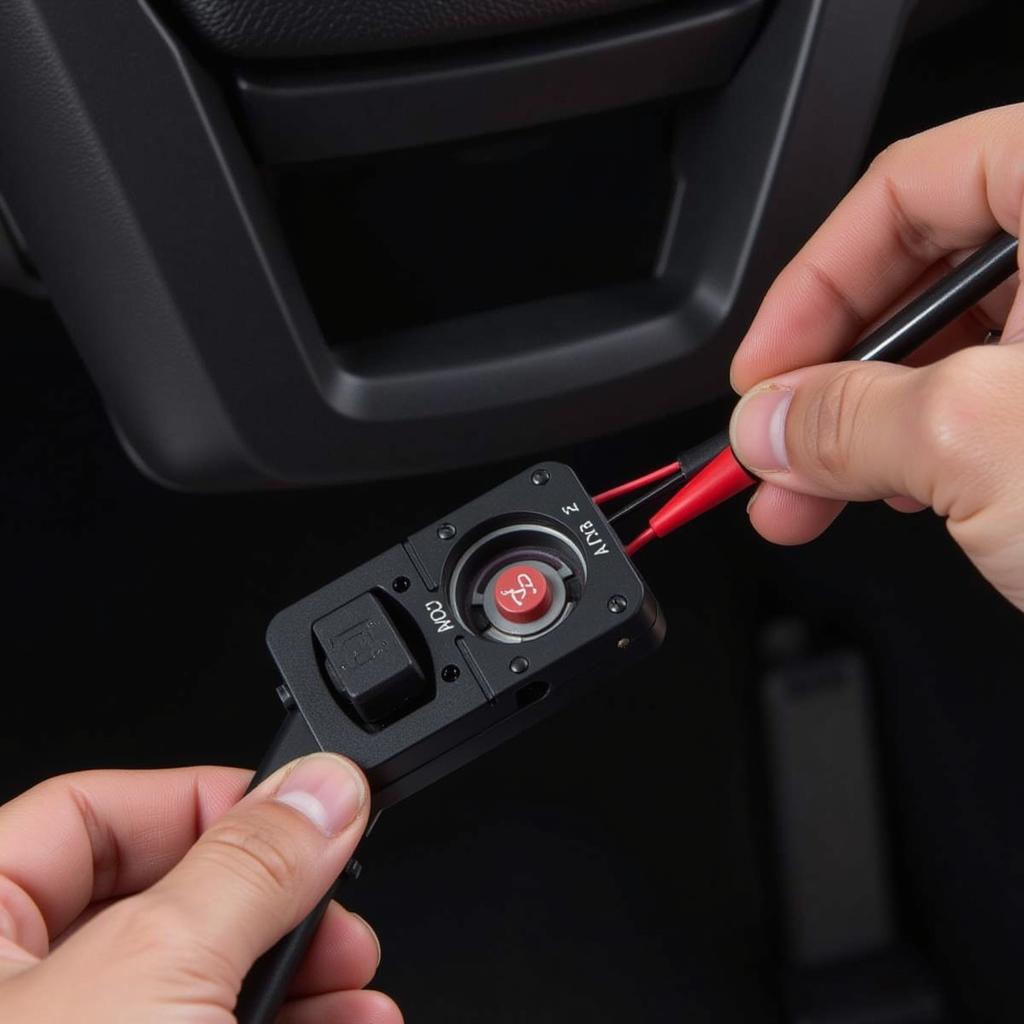A dead car battery is frustrating, especially when it seems to happen out of the blue. Often, the culprit is a parasitic draw, a sneaky electrical drain that occurs even when your car is off. This guide will walk you through checking for a parasitic draw, helping you pinpoint the source and get your car back on the road.
Similar to a normal current draw on car battery, a parasitic draw can be elusive, but with the right tools and approach, it’s easily diagnosed. First, it’s important to understand what a “normal” draw is. Modern cars, with their complex computer systems and security features, always have some current flowing even when the ignition is off. This normal current draw is usually very low, typically between 25 and 50 milliamps. However, a parasitic draw can exceed this normal range, slowly draining your battery over time.
Understanding Parasitic Draws
A parasitic draw occurs when a circuit in your vehicle continues to draw power even after the car is turned off and the key is removed. This can be caused by a variety of issues, from faulty components to interior lights left on, or even a glove box light that won’t turn off. Identifying the exact source is key to resolving the problem.
Common Causes of Parasitic Draws
Several components are common culprits for parasitic draws. These include:
- Faulty alternator: A failing alternator can drain the battery even when the engine is off.
- Interior lights: A stuck switch or faulty door latch can prevent interior lights from turning off.
- Glove box, trunk, or under-hood lights: These lights can sometimes stay on if the switch is malfunctioning.
- Radio or amplifier: Issues with the car’s entertainment system can lead to a parasitic draw.
- Clock, alarm, or other accessories: Even small accessories can contribute to a drain if they are malfunctioning.
- Faulty relays or modules: A stuck relay can keep a circuit active, leading to a constant draw.
How to Check for a Parasitic Draw
Checking for a parasitic draw involves using a multimeter to measure the current flowing through your car’s electrical system when the car is off. This is a straightforward process, even for someone with limited automotive experience.
Gathering Your Tools
You’ll need a few tools for this task:
- Digital multimeter: This tool measures current, voltage, and resistance.
- Test light (optional): This can be a helpful visual aid.
- Protective gloves and eyewear: Always prioritize safety when working with car batteries.
Steps to Test for a Parasitic Draw
Here’s a step-by-step guide on how to test for a parasitic draw test dual battery:
- Prepare your vehicle: Park your car in a safe location, turn off the engine, and remove the key.
- Set up the multimeter: Set your multimeter to measure DC amps. Most multimeters have a specific setting for this.
- Disconnect the negative battery cable: Carefully remove the negative cable from the battery terminal.
- Connect the multimeter: Connect the black lead of the multimeter to the negative battery terminal and the red lead to the disconnected negative battery cable.
- Observe the reading: The multimeter will display the current draw. A reading above 50 milliamps suggests a potential parasitic draw.
Identifying the Culprit
If you’ve identified a significant current draw, the next step is to find the source. This involves systematically removing fuses one at a time while observing the multimeter reading. When the reading drops significantly, you’ve likely found the circuit with the problem. Consult your owner’s manual to determine which components are on that circuit.
Like with a jeep grand cherokee parasitic draw, remember to check relays and modules as well, as they can also be sources of a parasitic draw. Sometimes, a simple relay replacement can solve the problem.
Preventing Future Parasitic Draws
While not all parasitic draws are preventable, some simple steps can minimize the risk:
- Ensure all lights are off: Double-check interior, glove box, trunk, and under-hood lights before exiting your vehicle.
- Avoid leaving accessories plugged in: Unplug phone chargers and other accessories when not in use.
- Address electrical issues promptly: If you notice any flickering lights or other electrical problems, have them checked by a qualified technician.
Knowing the acceptable current draw on a car battery is crucial. Exceeding this limit will eventually drain your battery.
Conclusion
Checking for a parasitic draw is a critical step in diagnosing car battery problems. By following the steps outlined in this guide, you can identify the source of the drain and prevent future battery issues. Remember, a healthy battery is essential for a reliable vehicle. So, grab your multimeter and start checking for that pesky parasitic draw! You can find more information about car battery current draw.
FAQ
- What is a normal parasitic draw on a car battery? A normal draw is typically between 25 and 50 milliamps.
- What tools do I need to check for a parasitic draw? You’ll need a digital multimeter, and optionally a test light.
- How do I interpret the multimeter reading? A reading above 50 milliamps indicates a potential parasitic draw.
- What should I do if I find a parasitic draw? Systematically remove fuses to pinpoint the affected circuit.
- Can I fix a parasitic draw myself? Depending on the cause, you may be able to replace a faulty fuse, relay, or bulb. For more complex issues, consult a qualified mechanic.
- How can I prevent parasitic draws? Ensure lights are off, unplug accessories, and address electrical problems promptly.
- What are the most common causes of parasitic draws? Faulty alternators, interior lights, and malfunctioning accessories are common culprits.



